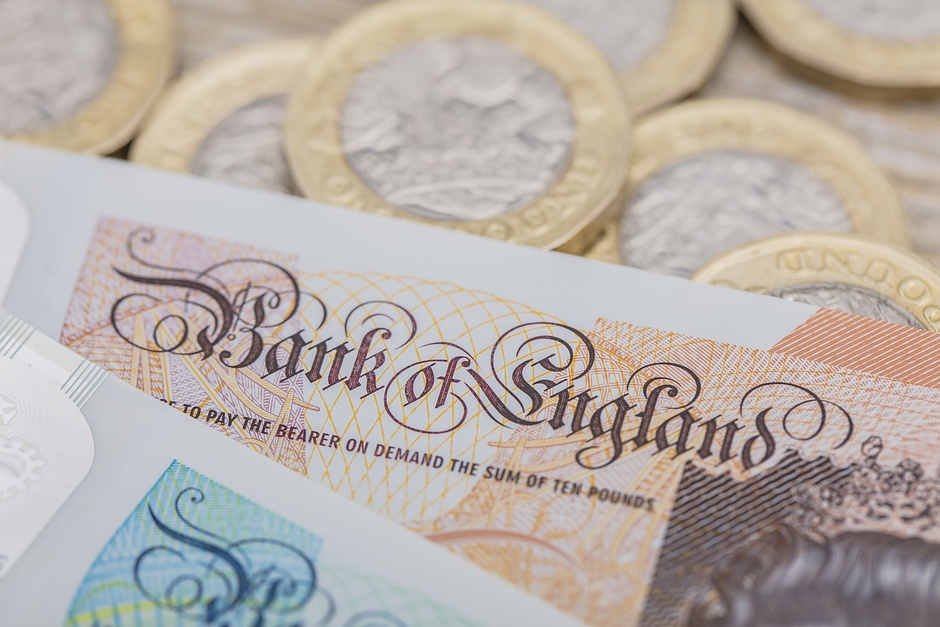GBP/USD remains depressed around mid-1.2800s, holds above multi-week low set on Monday
- GBP/USD edges lower on Tuesday, though the downside remains cushioned.
- A softer risk tone benefits the safe-haven USD and exerts pressure on the pair.
- Traders now look to the key central bank event risk before placing fresh bets.

The GBP/USD pair struggles to capitalize on the overnight goodish recovery from the vicinity of the 1.2800 round figure or a nearly three-week low and attracts some selling during the Asian session on Tuesday. Spot prices currently trade with a negative bias around mid-1.2800s amid a modest US Dollar (USD) strength, though the fundamental backdrop warrants caution for bearish traders.
A softer risk tone assists the safe-haven US Dollar (USD) to trade with a mild positive bias just below a two-and-half-week high touched on Monday and turns out to be a key factor exerting some pressure on the GBP/USD pair. That said, expectations that the Federal Reserve (Fed) will start lowering borrowing costs in September might act as a headwind for the buck. Furthermore, traders might prefer to wait for more cues about the Fed's rate-cut path before committing to a firm near-term direction. Hence, the focus will remain glued to the outcome of the highly-anticipated two-day FOMC monetary policy meeting on Wednesday.
Investors this week will further take cues from the Bank of England (BoE) policy update on Thursday and important US macro releases scheduled at the start of a new month, including the US Nonfarm Payrolls (NFP) report on Friday. In the meantime, diminishing odds of an interest rate cut by the BoE in August might continue to act as a tailwind for the British Pound (GBP) and contribute to limiting the downside for the GBP/USD pair. This makes it prudent to wait for some follow-through selling and a sustained breakdown through the 1.2800 mark before positioning for an extension of the recent pullback from a one-year peak.
Pound Sterling FAQs
The Pound Sterling (GBP) is the oldest currency in the world (886 AD) and the official currency of the United Kingdom. It is the fourth most traded unit for foreign exchange (FX) in the world, accounting for 12% of all transactions, averaging $630 billion a day, according to 2022 data. Its key trading pairs are GBP/USD, aka ‘Cable’, which accounts for 11% of FX, GBP/JPY, or the ‘Dragon’ as it is known by traders (3%), and EUR/GBP (2%). The Pound Sterling is issued by the Bank of England (BoE).
The single most important factor influencing the value of the Pound Sterling is monetary policy decided by the Bank of England. The BoE bases its decisions on whether it has achieved its primary goal of “price stability” – a steady inflation rate of around 2%. Its primary tool for achieving this is the adjustment of interest rates. When inflation is too high, the BoE will try to rein it in by raising interest rates, making it more expensive for people and businesses to access credit. This is generally positive for GBP, as higher interest rates make the UK a more attractive place for global investors to park their money. When inflation falls too low it is a sign economic growth is slowing. In this scenario, the BoE will consider lowering interest rates to cheapen credit so businesses will borrow more to invest in growth-generating projects.
Data releases gauge the health of the economy and can impact the value of the Pound Sterling. Indicators such as GDP, Manufacturing and Services PMIs, and employment can all influence the direction of the GBP. A strong economy is good for Sterling. Not only does it attract more foreign investment but it may encourage the BoE to put up interest rates, which will directly strengthen GBP. Otherwise, if economic data is weak, the Pound Sterling is likely to fall.
Another significant data release for the Pound Sterling is the Trade Balance. This indicator measures the difference between what a country earns from its exports and what it spends on imports over a given period. If a country produces highly sought-after exports, its currency will benefit purely from the extra demand created from foreign buyers seeking to purchase these goods. Therefore, a positive net Trade Balance strengthens a currency and vice versa for a negative balance.
Author

Haresh Menghani
FXStreet
Haresh Menghani is a detail-oriented professional with 10+ years of extensive experience in analysing the global financial markets.

















